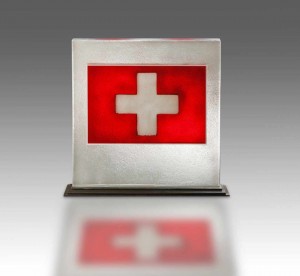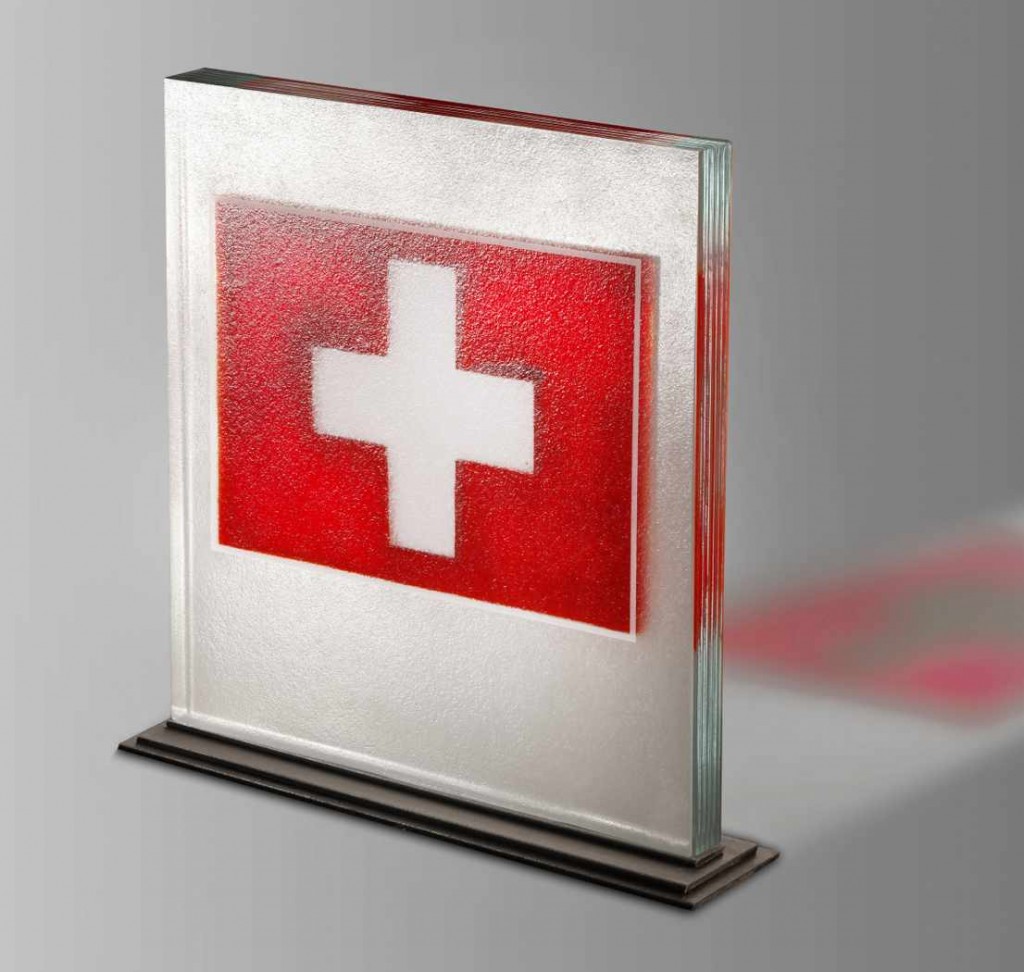 Return the 2011 summary
Return the 2011 summary
 Work available
Work available
Switzerland
2011
50 x 50 x 3,6 cm | 28 kg
Fused multilayer glass with inclusion of pigments ![]()
The flag of Switzerland originated from the desire to unite the three cantons of Schwyz, Uri and Unterwalden, whose sovereignty had been recognized within the Holy Roman Empire but which were under threat from the Habsburgs.
It was in 1339, on the occasion of the battle of Laupen which opposed the confederates to the troops of Louis IV of Bavaria, that "all the soldiers were marked with the holy cross, white on a red background, because the freedom of the nation was for them a cause as sacred as the liberation of the Holy Land,” according to a local chronicle.
Ce drapeau ne cessa, dès lors, de s’imposer comme le symbole de l’unité helvétique.
En 1815, un règlement militaire introduisit l’usage du brassard rouge à croix blanche pour les soldats confédérés, mais l’heure n’était pas encore au centralisme et la plupart des troupes ne juraient fidélité qu’à leur écusson cantonal. C’est la Constitution de 1848 qui consacra définitivement la croix blanche sur fond rouge comme drapeau officiel de la Suisse.
Click on the images to zoom
Official name: Swiss Confederation
Continent: Europe | Capital: Bern
Area: 41 290 km2 | Population (2009) : 7 785 806 habitants
Official languages : français, allemand, italien, romanche
Currency: Swiss franc
Border countries: Allemagne, Autriche, France, Italie, Liechtenstein
National holiday: August 1 | Motto: One for all! All for one
Member of the United Nations: September 10, 2002
Member of UNESCO: January 28, 1949


